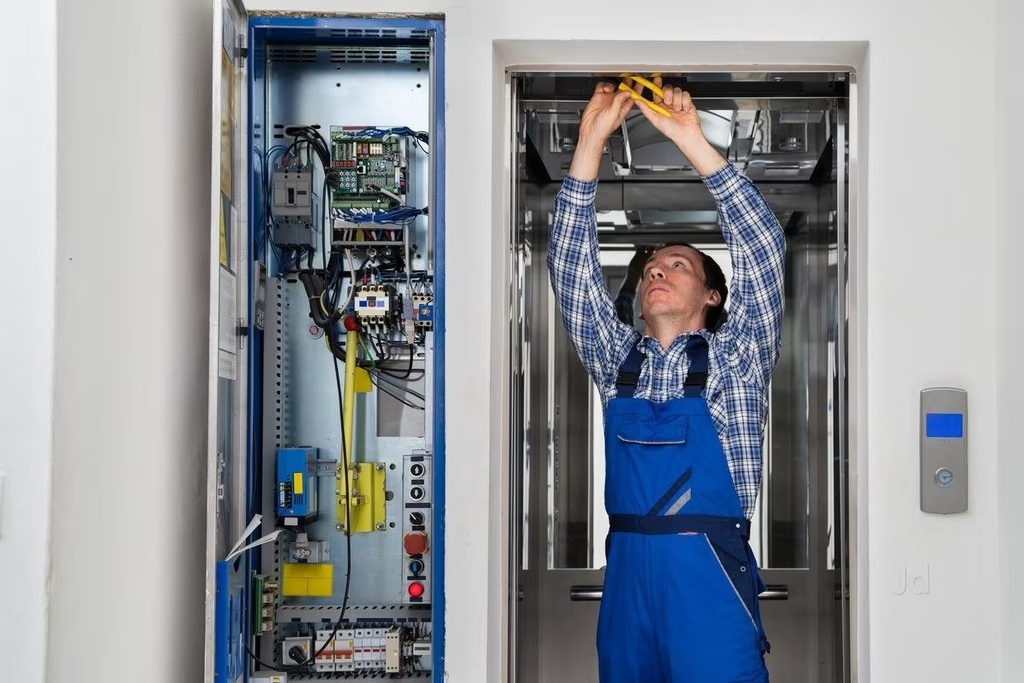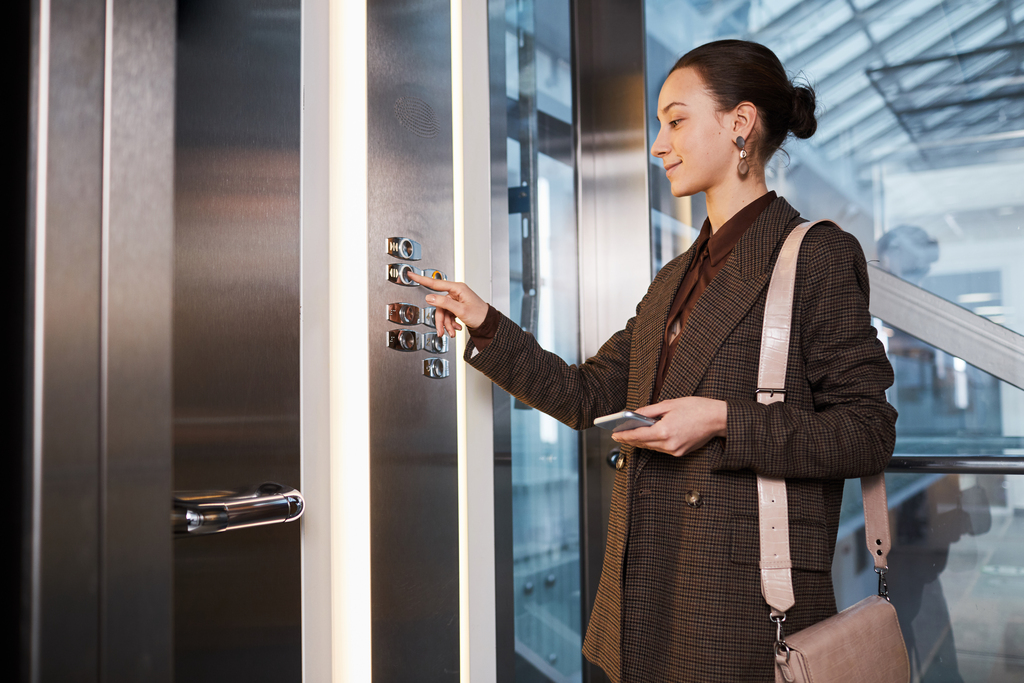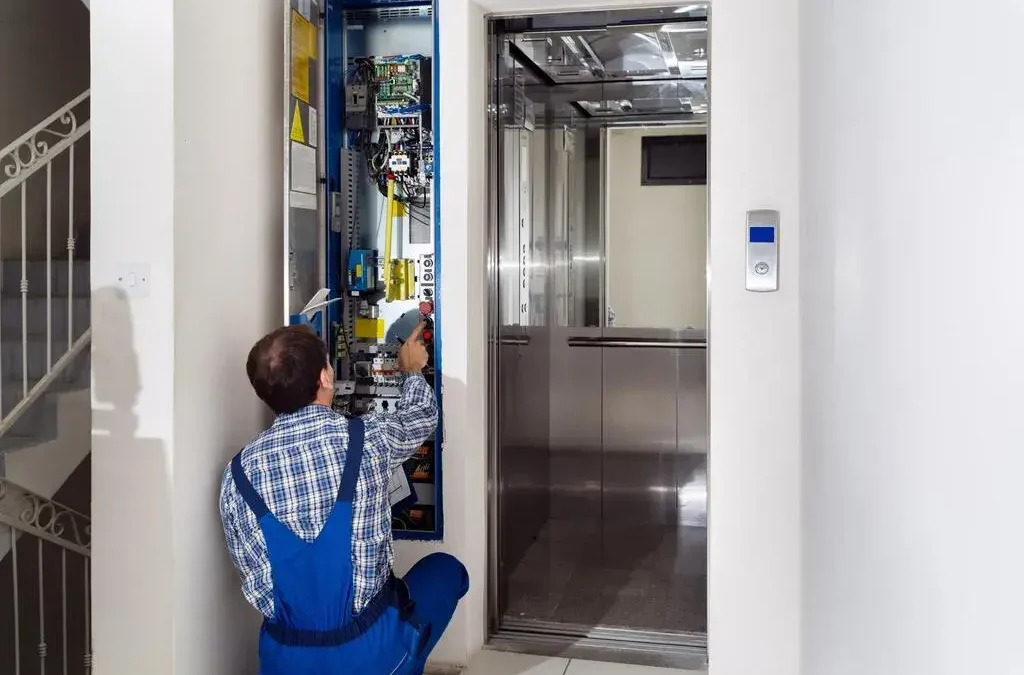Explore this post with:
In today’s rapidly evolving facility management landscape, sustainability is more than just a trend; it’s a critical requirement for responsible building operations. As organizations strive to minimize their environmental footprint and meet regulatory standards, integrating sustainable practices into elevator preventive maintenance has become essential.
Eco-friendly maintenance methods not only help protect the environment but also drive operational efficiency and long-term cost savings. This comprehensive guide explores how green solutions are transforming elevator maintenance, detailing practical strategies and industry best practices that ensure both environmental stewardship and optimal performance for modern facilities.
Integrating Sustainability into Elevator Preventive Maintenance
In modern facility management, adopting planned preventive maintenance solutions for elevator preventive maintenance is not just an option but a necessity. This approach involves a holistic consideration of environmental impact across various aspects of elevator maintenance, ensuring that operations are efficient and align with broader environmental conservation goals.
1. Eco-Friendly Materials and Products:

Using eco-friendly materials in elevator maintenance is a proactive step towards environmental stewardship. This involves a shift from traditional materials to more sustainable alternatives. For instance, using biodegradable lubricants specifically formulated for elevator machinery helps reduce pollution. These lubricants break down more easily in the environment, minimizing soil and water contamination.
Similarly, adopting eco-friendly cleaning agents for elevator cabins and components ensures that the cleaning process does not release harmful chemicals into the environment. Low-VOC paints are crucial for maintaining air quality, as traditional paints often release volatile organic compounds that can harm human health and the environment.
Furthermore, incorporating recycled or sustainable materials in the construction and maintenance of elevators, such as using parts fabricated from recycled metals or sustainable flooring materials, significantly reduces the ecological footprint of the entire lifecycle of an elevator.
2. Energy Efficiency:
Energy efficiency in elevator maintenance is achieved through several innovative practices. LED lighting in elevator cabins and control rooms consumes less energy and has a longer lifespan, reducing the frequency of replacements and waste. Energy-efficient power tools minimize electricity consumption during maintenance operations.
Programmable thermostats in elevator machine rooms can optimize heating and cooling, reducing energy waste. Incorporating renewable energy sources, such as solar panels, to partially power elevator operations is a forward-thinking approach that reduces dependence on non-renewable energy sources and minimizes greenhouse gas emissions.
3. Green Waste Management:

Effective waste management is critical in reducing the environmental impact of elevator maintenance. Proper disposal of hazardous materials like hydraulic fluids is essential to prevent soil and water contamination.
Elevator parts such as cables, pulleys, and electronic components can often be recycled, reducing waste sent to landfills. Additionally, implementing safe disposal systems for oils, batteries, and other hazardous substances is essential to prevent environmental contamination.
4. Water Conservation:
Water conservation in elevator maintenance involves using water-efficient cleaning systems and technologies. High-pressure, low-volume cleaning systems can effectively clean elevator components while significantly reducing water usage.
Maintaining cooling systems in elevator machine rooms is critical to prevent leaks and water wastage. These practices conserve a vital resource and reduce the facility’s water treatment and supply costs.
5. Regular Energy Audits:

Regular energy audits are crucial for identifying areas where energy is being wasted in elevator systems. These audits assess the energy consumption patterns of elevators, including lighting, motors, and HVAC systems in machine rooms. Facilities can implement targeted improvements by pinpointing inefficiencies, such as upgrading to more energy-efficient motors or optimizing lighting systems.
Regular energy audits reduce the carbon footprint of elevator operations and identify opportunities for cost savings, making sustainable practices both environmentally and economically beneficial.
6. Training and Awareness:
The success of sustainable maintenance practices heavily relies on the training and awareness of the maintenance staff. Personnel must be well-informed about sustainability principles and trained in eco-friendly maintenance practices. This includes understanding the correct usage of green products, the importance of energy and water conservation, and the best practices in waste management.
Regular training sessions and workshops are essential to ensure staff remain up-to-date with sustainable techniques and technologies. Empowering the maintenance team with this knowledge enables them to make more environmentally conscious decisions in their daily operations.
7. Sustainable Sourcing:

Sustainable sourcing is a critical component of eco-friendly preventive maintenance. This involves selecting suppliers committed to sustainable practices in their products and operations. Choosing locally sourced materials reduces transportation emissions, a significant factor in the overall environmental impact.
Additionally, opting for suppliers that utilize renewable energy sources and sustainable materials in their production processes helps to reduce the environmental footprint of the entire supply chain. Sustainable sourcing ensures that maintenance practices are environmentally sound and promotes sustainability throughout the industry.
8. Incorporating Renewable Energy:
Incorporating renewable energy sources into elevator maintenance practices underscores a commitment to sustainability. Utilizing solar panels and wind turbines to power maintenance facilities and equipment demonstrates a forward-thinking approach to energy use.
Transitioning to electric or hybrid vehicles for the maintenance team reduces carbon emissions and aligns with global efforts to reduce reliance on fossil fuels. As technology advances, more opportunities arise for incorporating renewable energy into every aspect of elevator maintenance, setting a new standard for eco-friendly practices in the industry.
Conclusion:
Adopting sustainable practices in elevator maintenance into planned preventive maintenance solutions is a strategic move towards a more environmentally responsible future. Organizations can dramatically reduce their environmental impact by integrating eco-friendly materials, focusing on energy efficiency, implementing effective waste management, conserving water, conducting regular energy audits, training staff, sustainably sourcing supplies, and incorporating renewable energy.
These practices contribute to the conservation of natural resources and enhance operational efficiency and cost-effectiveness. As sustainability becomes increasingly central to business operations, these methods in preventive maintenance will play a pivotal role in shaping an environmentally conscious, efficient, and responsible approach to facility management.
Explore Further:
About the Author: Nishant Desai
Nishant Desai has over 8+ years of experience in SEO and blogging. His blogging expertise can organically increase online visibility and traffic for blogs and websites. With his SEO expertise, he has already contributed to iGeeksblog, Firstsportz, and Firstcuriosity. In addition, he can create content strategies, conduct keyword research, publish optimized blogs, and resolve technical issues.




